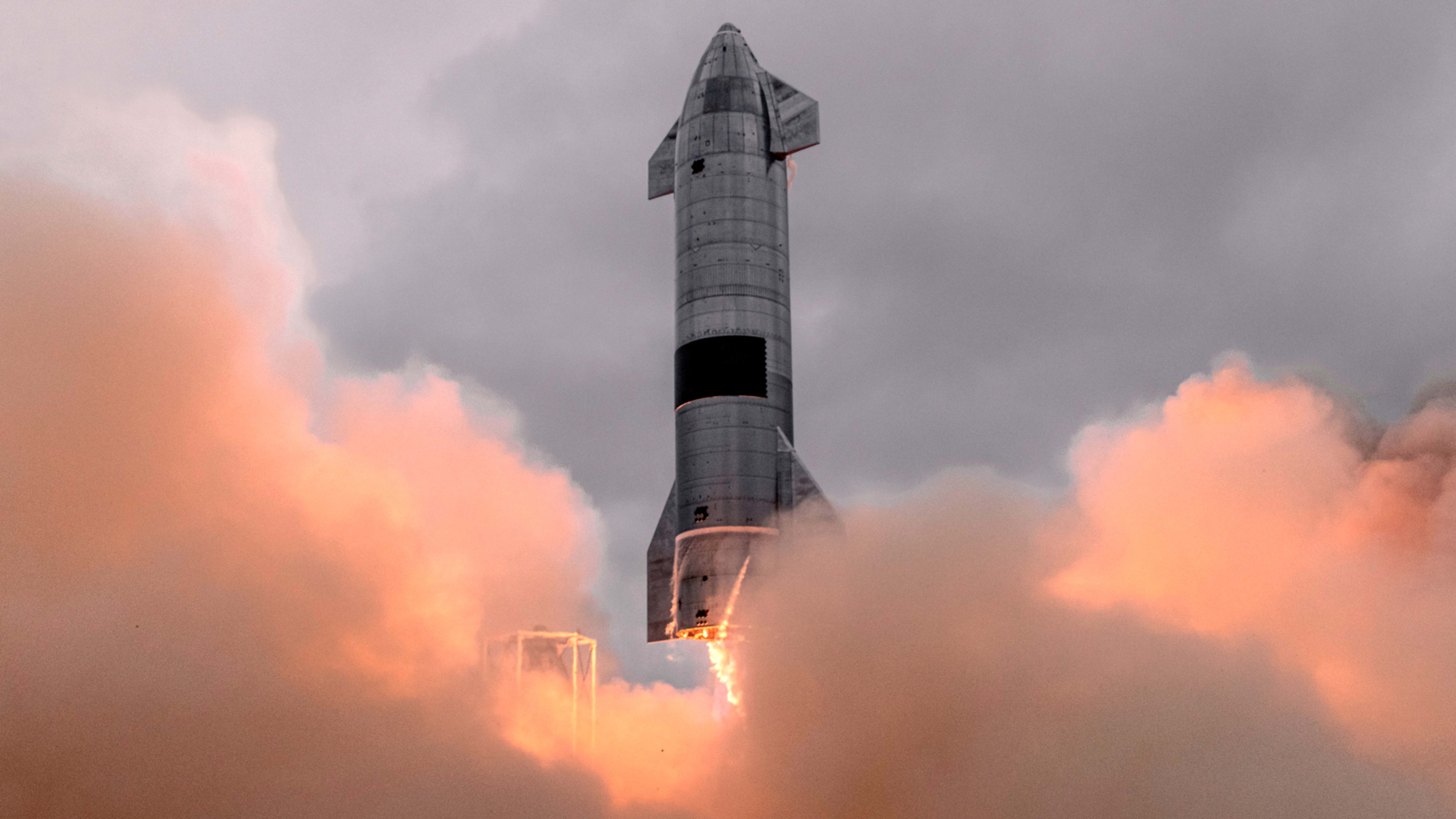Elon Musk is almost ready to light SpaceX’s biggest candle yet. In a video appearance at a space-science conference on Wednesday, he predicted the two-stage, fully reusable Starship rocket could make its first orbital launch early next year.
“The first orbital flight, we’re hoping to do in January,”
“We’ll be complete with the launch pad and launch tower later this month,” the SpaceX founder and Tesla CEO said at the fall meeting of the National Academy of Science’s Space Studies Board. “We’ll do a bunch of tests in December and hopefully launch in January.”
Construction is currently underway at the rocket firm’s Boca Chica, Texas test site. SpaceX also needs to secure a launch license from the Federal Aviation Administration, which Musk said forecast will arrive around the end of the year.
Starship has the potential to make SpaceX’s Falcon 9 and Falcon Heavy look as obsolete as traditional, expendable rockets now appear next to those partially-reusable launch vehicles.
Falcon 9, first launched in 2010 and since May 2020 the rocket American astronauts ride to the International Space Station, can send 25 tons to low Earth orbit; Falcon Heavy, which debuted in 2018, can loft 70 tons to low Earth orbit. But Starship is designed to carry 110 tons—and, with refueling of its second stage in orbit, can send that much to the moon or Mars.
Starship’s Super Heavy booster, which has yet to fly, will initially feature 29 Raptor engines burning liquid methane and oxygen to develop 12 million pounds of thrust, as Musk tweeted Tuesday above a picture of those 29 engines.
12 million pounds of thrust at liftoff pic.twitter.com/4ArkgU4Vff
— Elon Musk (@elonmusk) November 17, 2021
Musk said that will evolve to 33 engines with 2.2 times the 7.7 million pounds of thrust of the Saturn V rocket that went to the Moon half a century ago—some 17 million pounds.
“It’s the biggest rocket ever designed,” Musk said.
And both Starship’s Super Heavy first stage and its six-engine second stage—also named Starship, and which has carried out an increasingly successful series of test flights over the last year—can return to Earth for reuse.
“What we’re aiming to develop with Starship is a generalized way to transport large amounts of mass or people,” Musk said.
But first, this vehicle has to launch and land successfully, and Musk returned to his habit of waving off excessive optimism.
add citationWe could have a moon research station, which would be amazing.”
Starship’s second stage also now stands to play a critical role in NASA’s return to the Moon later this decade, with the space agency having picked a version of that vehicle to take astronauts from lunar orbit to the surface and back.
Musk nodded to that contract, saying “I look forward to doing that for NASA,” but added that Starship’s cargo-transport capabilities would support the construction of a larger lunar base. “We could have a moon research station, which would be amazing.”
But Musk has much bigger dreams for what hundreds of Starship vehicles could accomplish: ensure that humanity’s fate is no longer rooted to that of Earth.
“Long term, it’s essential for preserving the light of consciousness,” he said. “The probable lifespan of civilization is much greater if we’re a multiplanet species.”
Questions and answers
After Musk’s roughly 15-minute speech—which began with his son X sitting on his lap and waving hi—he took questions from Space Studies Board members. The schedule had that budgeted for 15 minutes, but Musk stayed for more than 55 minutes and got well into the weeds.
One question about Musk’s decision to build Starship and Super Heavy out of stainless steel instead of aluminum or carbon-fiber composite elicited a detail-soaked answer about how steel is not just cheaper and easier to work with but stronger when filled with cryogenic propellants.
“Obviously you can tell I’m a big fan of stainless steel,” Musk concluded that soliloquoy, joking: “Stainless steel and I should get a room or something.”
A question about protecting astronauts on long interplanetary journeys from the high radiation of solar storms got a much less complete response ending with: “We don’t have all the answers there.”
Musk used a comment about SpaceX’s role in launching NASA’s upcoming Europa Clipper probe to that moon of Jupiter to tout how Starship could send much larger payloads into the solar system if we can generate fuel from resources mined from other worlds.
“Basically, anyplace we can put the gas station, that gives us a whole leap forward,” he said.
One other attendee had a more skeptical view of SpaceX tampering with other planets, asking Musk about how he will avoid contaminating Mars with human microbes.
He suggested that human exploration could be kept confined to part of Mars, saying “You wouldn’t want to spread biological debris all over Mars.”
But the header image of Musk’s Twitter account—a series of images showing the hypothetical terraforming of Mars into an Earth-like world—suggest he has his sights set far higher.
Recognize your brand’s excellence by applying to this year’s Brands That Matter Awards before the early-rate deadline, May 3.
